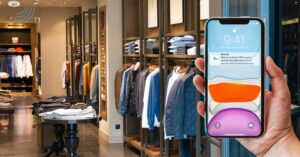Despite their love of and ease within the online world, today’s young people are not exclusively virtual shoppers, glued to their screens throughout the purchase journey. This new generation of digital natives loves the environment of the store, and values the interaction it offers. And they show no signs of changing their viewpoint.
This creates opportunities for brick and click retailers to challenge the purely online players, some of which – like eBay and Amazon – are responding by migrating out of their virtual comfort zone to investigate the high street. Global Young Shopper survey questioned shoppers aged 16-21 in ten markets around the world. Here’s what they told us about their online and offline shopping experiences.
1. More young people say they will only buy from retailers that have a physical presence.
Younger shoppers are slightly more likely than older people to shun shopping online altogether, however only a small percentage of 16-21 year olds never shop online.
When we questioned young shoppers about their online purchasing behavior, we found that in every single retail category, shoppers aged 16-21 are significantly more likely to say that they only buy online from shops that have a physical store.
2. Retailers must join the dots to satisfy the omnichannel generation.
Our research confirms that young shoppers are an omnichannel generation, expecting a seamless experience between the two environments. Two thirds think that retailers should provide customer support in stores, even if they have bought online.
This means retailers must offer a fully integrated service, with products and information available across all channels. Young people expect to be able go online to check stock in a physical store, to return their online purchases to physical stores, and to access customer support wherever and whenever they need it.
3. Experiencing the product is most important for high ticket items.
For more expensive and high involvement categories, young shoppers expect to be able to buy in store. For instance, in seven of the ten markets we surveyed, 16-21 year olds were more likely to shop exclusively in stores for mobile phones. Clearly for this age group to fully appreciate what phone is the right one, a visit to a store to see it and handle the products and to talk to sales staff in person is essential.
The research shows that for young people, online shopping is not the default option. And retail markets are not, as some may have predicted, progressing relentlessly towards 100% e-commerce. Instead physical stores and virtual shopping are likely to co-exist with improved synergy.
Reference: http://blog.gfk.com/2015/05/the-shopper-of-the-future-why-young-shoppers-wont-turn-their-back-on-physical-stores/









